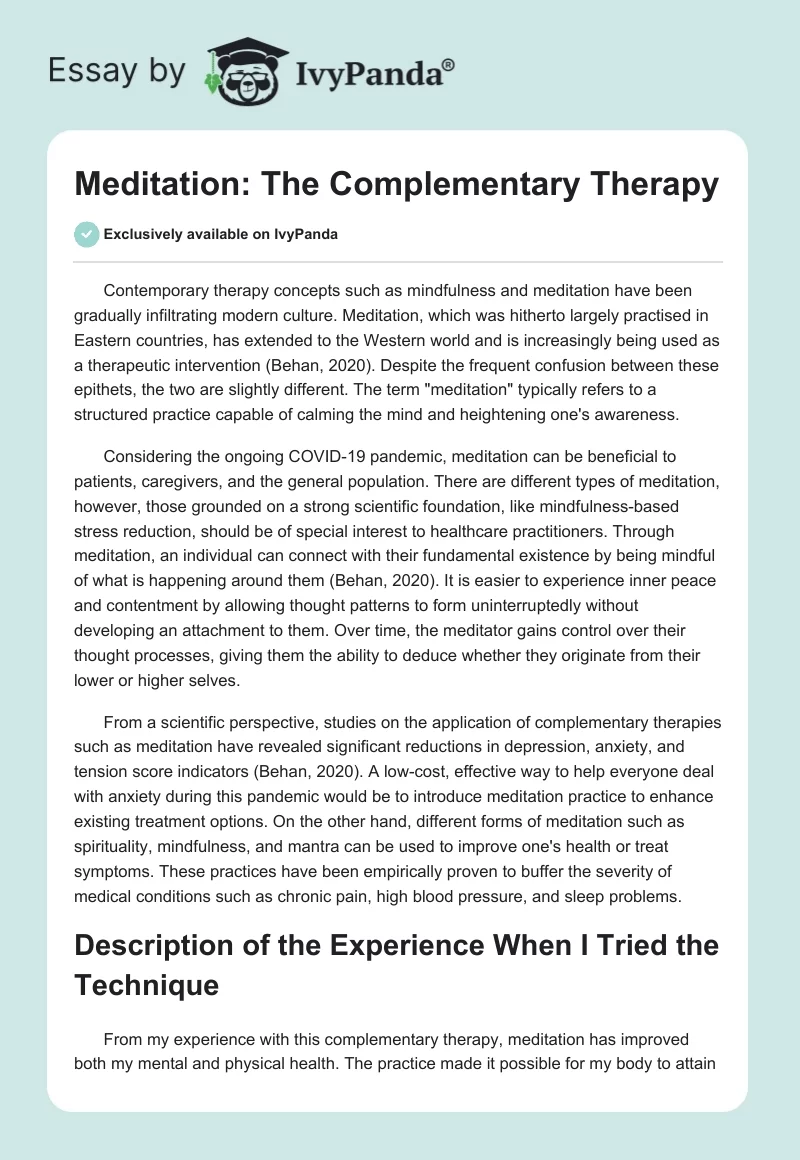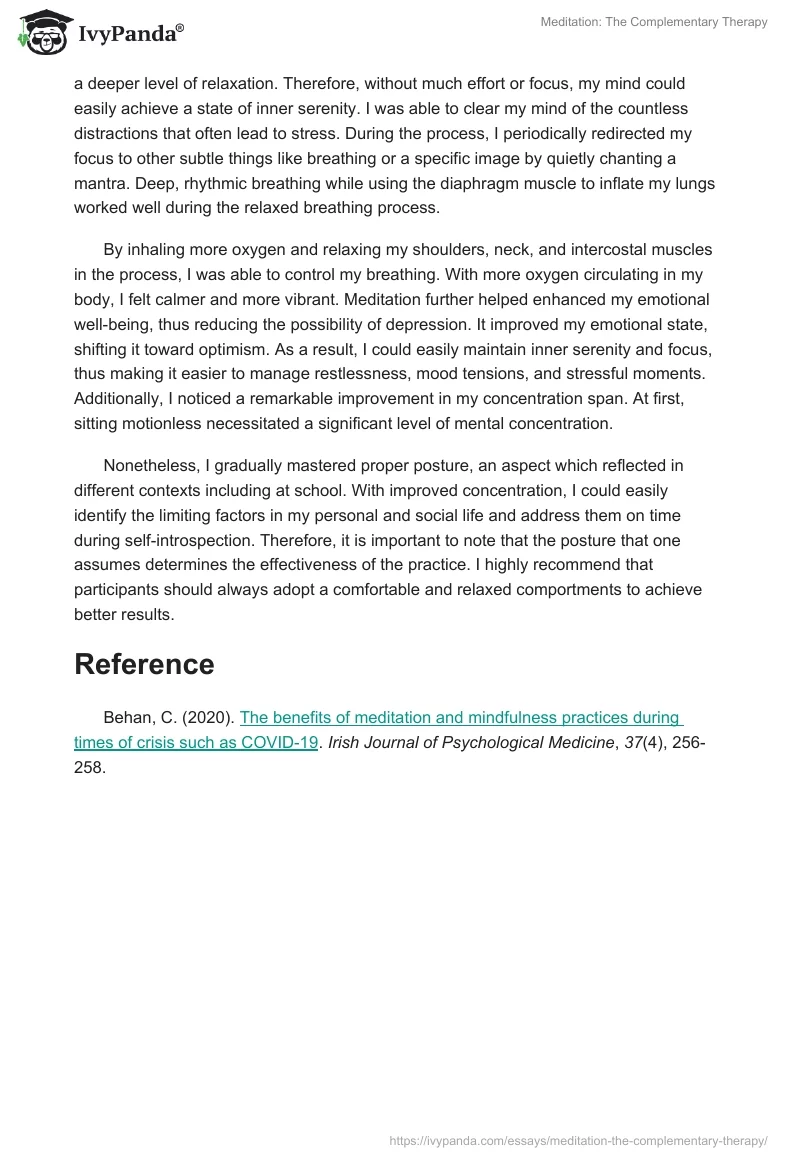Contemporary therapy concepts such as mindfulness and meditation have been gradually infiltrating modern culture. Meditation, which was hitherto largely practised in Eastern countries, has extended to the Western world and is increasingly being used as a therapeutic intervention (Behan, 2020). Despite the frequent confusion between these epithets, the two are slightly different. The term “meditation” typically refers to a structured practice capable of calming the mind and heightening one’s awareness.
Considering the ongoing COVID-19 pandemic, meditation can be beneficial to patients, caregivers, and the general population. There are different types of meditation, however, those grounded on a strong scientific foundation, like mindfulness-based stress reduction, should be of special interest to healthcare practitioners. Through meditation, an individual can connect with their fundamental existence by being mindful of what is happening around them (Behan, 2020). It is easier to experience inner peace and contentment by allowing thought patterns to form uninterruptedly without developing an attachment to them. Over time, the meditator gains control over their thought processes, giving them the ability to deduce whether they originate from their lower or higher selves.
From a scientific perspective, studies on the application of complementary therapies such as meditation have revealed significant reductions in depression, anxiety, and tension score indicators (Behan, 2020). A low-cost, effective way to help everyone deal with anxiety during this pandemic would be to introduce meditation practice to enhance existing treatment options. On the other hand, different forms of meditation such as spirituality, mindfulness, and mantra can be used to improve one’s health or treat symptoms. These practices have been empirically proven to buffer the severity of medical conditions such as chronic pain, high blood pressure, and sleep problems.
Description of the Experience When I Tried the Technique
From my experience with this complementary therapy, meditation has improved both my mental and physical health. The practice made it possible for my body to attain a deeper level of relaxation. Therefore, without much effort or focus, my mind could easily achieve a state of inner serenity. I was able to clear my mind of the countless distractions that often lead to stress. During the process, I periodically redirected my focus to other subtle things like breathing or a specific image by quietly chanting a mantra. Deep, rhythmic breathing while using the diaphragm muscle to inflate my lungs worked well during the relaxed breathing process.
By inhaling more oxygen and relaxing my shoulders, neck, and intercostal muscles in the process, I was able to control my breathing. With more oxygen circulating in my body, I felt calmer and more vibrant. Meditation further helped enhanced my emotional well-being, thus reducing the possibility of depression. It improved my emotional state, shifting it toward optimism. As a result, I could easily maintain inner serenity and focus, thus making it easier to manage restlessness, mood tensions, and stressful moments. Additionally, I noticed a remarkable improvement in my concentration span. At first, sitting motionless necessitated a significant level of mental concentration.
Nonetheless, I gradually mastered proper posture, an aspect which reflected in different contexts including at school. With improved concentration, I could easily identify the limiting factors in my personal and social life and address them on time during self-introspection. Therefore, it is important to note that the posture that one assumes determines the effectiveness of the practice. I highly recommend that participants should always adopt a comfortable and relaxed comportments to achieve better results.
Reference
Behan, C. (2020). The benefits of meditation and mindfulness practices during times of crisis such as COVID-19. Irish Journal of Psychological Medicine, 37(4), 256-258.


